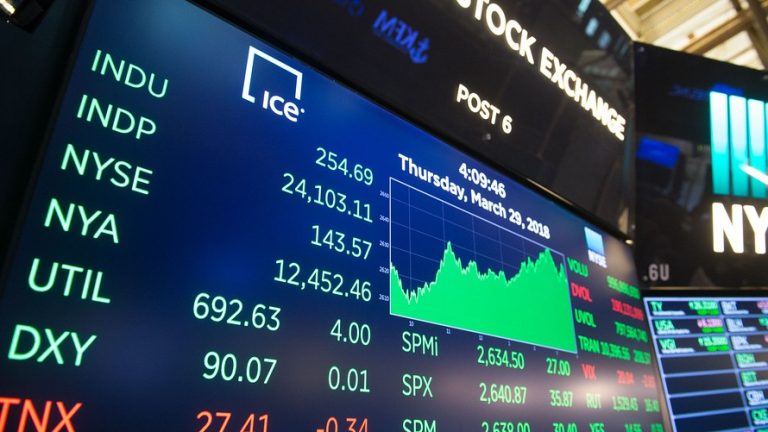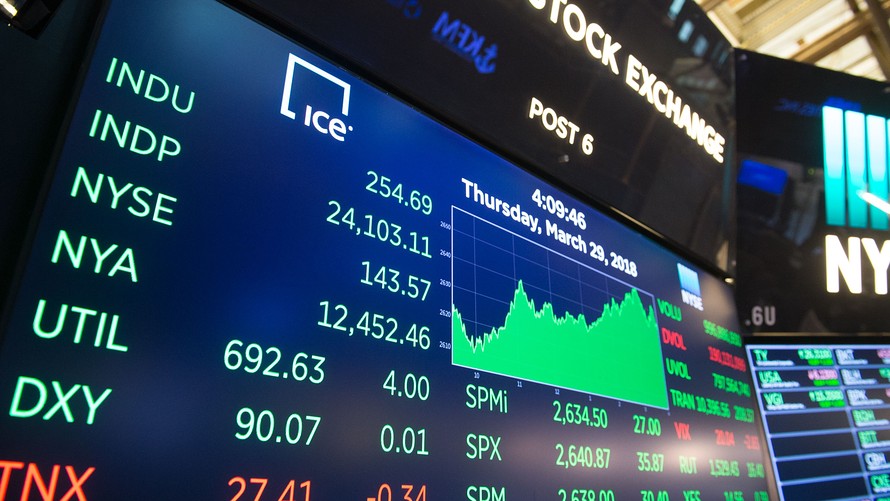

A much broader breakout in the markets may be very near.
The markets have started the month with a powerful, largely cyclical, rally. What’s missing is a significant breakout: Only 10% of the S&P are at new highs, despite a historic high for that index. Part of the reason is a big move-up in the largest stocks. Six of the seven biggest stocks in the S&P 500 are outperforming the index this month, including Apple, Alphabet and Amazon.
That may be about to change.
Multiple stocks are 2% to 3% below new highs, or close enough so that a modest move in the broader markets may produce a noteworthy number of new highs.
“A significant breakout in new highs may generate additional technical buying” that could lead to additional advances going into the end of the year, said Michael O’Rourke, chief market strategist at Jones Trading.
Big cap breakouts near
Big names just shy of new highs include many well-known names in health care, retail, home improvement and semiconductors:
Big Pharma
(% off 52-wk. highs)
GlaxoSmithKline, 2%
AstraZeneca, 2%
Bristol-Meyers, 3%
Merck, 4%
Discounters
(% off 52-wk. highs)
Walmart, 2%
Ross Stores, 2%
Costco, 3%
TJX, 3%
Home Improvement
(% off 52-wk. highs)
Stanley Black and Decker, 0%
Home Depot, 2%
Masco, 2%
Sherwin-Williams, 3%
Semis
(% off 52-wk. highs)
Taiwan Semi 1%
United Micro 1%
NXP Semis 2%
Micron 3%
Lam Research 2%
Traders debate energy rally
One breakout in particular has traders talking: Energy, the leading sector this month, is up nearly 7%, with double digit gains in exploration and production companies like Apache and Devon, and services firms like Halliburton and Schlumberger:
Energy rally?
Apache, up 14%
Devon, up 12%
Schlumberger up 12%
Halliburton, up 12%
What’s up?
1) The rally is broadening, and with energy the most beaten up sector, a rally makes some sense.
2) A modest oil rally (up 5% month to date)
3) Cessation of tax-loss selling. “Last week was end of year for many mutual funds so last chance to punt the losers to the worst sector in the S&P: Energy,” Roberto Friedlander, head of equity trading at Seaport Global, wrote to me.
4) Some have also noted that energy — along with health care — rallies and fades based on presidential candidate Elizabeth Warren’s prospects. She has been resolutely anti-fracking.
Transports and small caps
Two other laggard sectors may also be on the verge of breaking out: Transports and the small-cap Russell 2000 are both just shy of new highs.
A breakout in transports would be a Dow Theory confirmation: It is considered bullish when a new high in the Dow Industrials is confirmed by a new high in the transports.
New leadership
For Alec Young, managing director of global markets research at FTSE Russell, the potential breakout in the Russell 2000 is a sign the old momentum leadership is out of favor — Starbucks, Nike, Disney and McDonald’s. “There is a new crop of leadership in value [stocks], represented by banks, energy and small caps,” he said.
What’s driving the breakout?
While progress on trade and the Federal Reserve are drivers of the rally, Young insists that better economic reports in Europe and China and the U.S. are drivers of the recent rally.
“Lack of earnings visibility due to slow global growth has been a problem, but the numbers have been coming in better than expected. The bar is so low the numbers are beating consensus,” and that is positive for markets, he said.
Not everyone is convinced.
“I’m not sure the fundamentals warrant a breakout,” O’Rourke said. He agrees job growth is steady with low inflation, GDP prospects are only 2% or so for 2020, and earnings growth is still modest for such high valuations: “Nineteen times forward earnings [for the S&P 500] is very expensive late in the cycle,” he said.